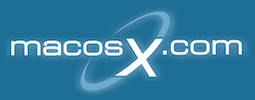Hi all,
There's a few things that annoy me a lot with OSX. Maybe there's a catch, please help me if there is. Also my apologies if these topics have been discussed earlier, I couldn't find them. Please link them to save time if you know them!
My basic frustration is the mouse dependancy of the OS. It seems you can't navigate through the OS just using the keyboard, which is essential I think, because you can work much faster, and get less RSI (Get in menubars, choosing within confirm windows, switching within the finder between frames, etc.)
Many Mac-users have told me tricks within the confirm window: command+D for "don't", esc for "cancel", and enter for "accept". But these don't always work. also sometimes you can use tab to select buttons, after which you can use the space bar to click. But many times you can't.
I really hope Apple will clean up this mess, as is seems such an easy problem. Getting the whole OS keyboard controllable should be target no.1, but that probably is a big, big project...
Other; beautifull OS, great stable software, fantastic hardware. But usability is the basis. And it seems to be set up very inconsequently, something I'd never expected from such a perfectionistic company. Enlighten me!

There's a few things that annoy me a lot with OSX. Maybe there's a catch, please help me if there is. Also my apologies if these topics have been discussed earlier, I couldn't find them. Please link them to save time if you know them!
My basic frustration is the mouse dependancy of the OS. It seems you can't navigate through the OS just using the keyboard, which is essential I think, because you can work much faster, and get less RSI (Get in menubars, choosing within confirm windows, switching within the finder between frames, etc.)
Many Mac-users have told me tricks within the confirm window: command+D for "don't", esc for "cancel", and enter for "accept". But these don't always work. also sometimes you can use tab to select buttons, after which you can use the space bar to click. But many times you can't.
I really hope Apple will clean up this mess, as is seems such an easy problem. Getting the whole OS keyboard controllable should be target no.1, but that probably is a big, big project...
Other; beautifull OS, great stable software, fantastic hardware. But usability is the basis. And it seems to be set up very inconsequently, something I'd never expected from such a perfectionistic company. Enlighten me!

